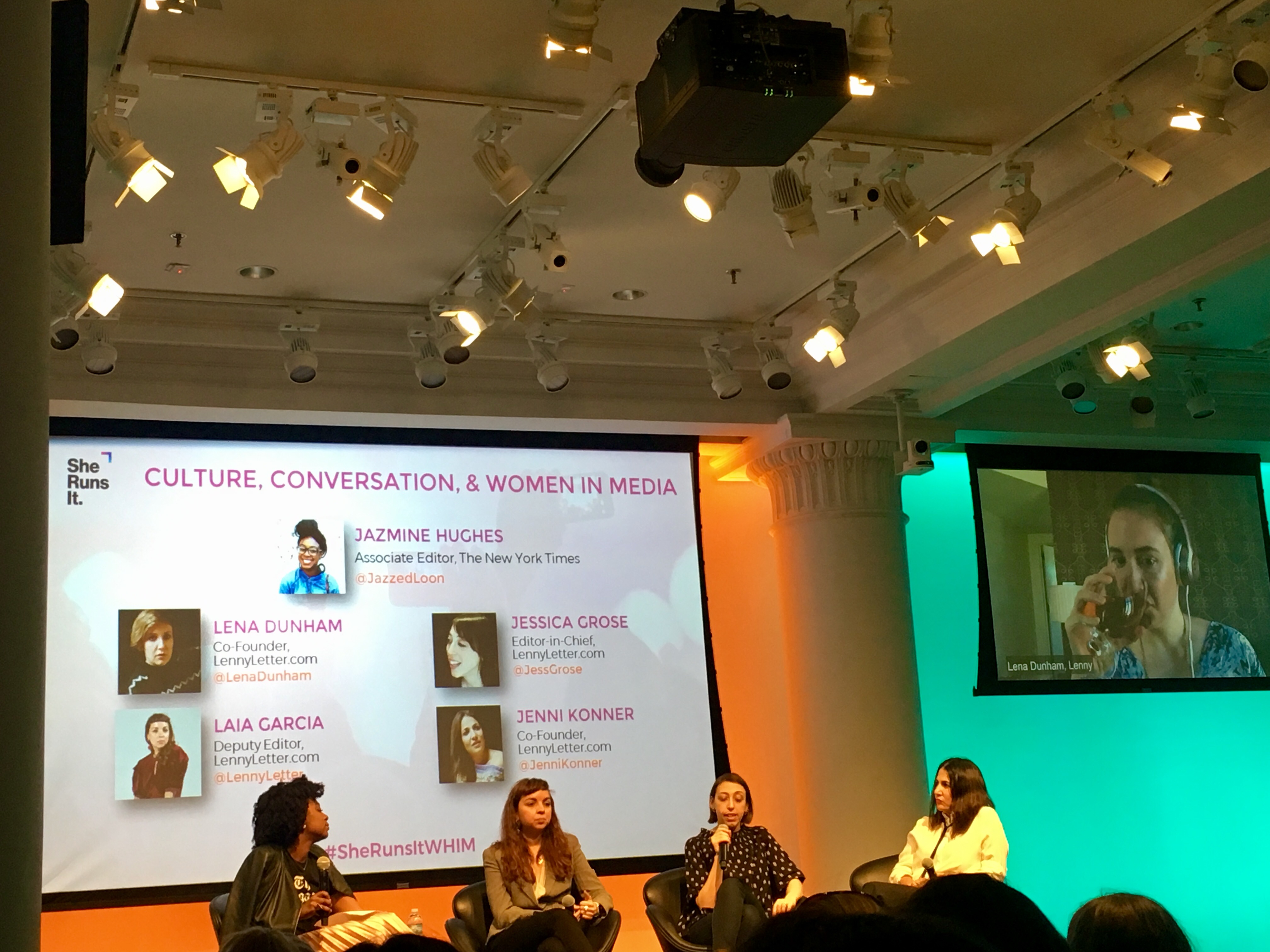Media
How Lenny Letter Turned an Unorthodox Media Model Into a Safe Place for Women
The origin story for Lenny Letter, the feminist newsletter launched by Girls co-creators Lena Dunham and Jenni Konner, starts back in 2014. Dunham was on a book tour to promote her essay collection Not That Kind of Girl, and at each event, she spoke with communities of women interested in their rights, bodies, and relationships to one another.
“They weren’t just there to meet me,” Dunham explained on a panel during She Runs It’s “2017 What’s Hot in Media” conference. “They were there to connect with each other. We wanted to tap into that.”

Just about every new media company wants to start a blog that can serve as a central hub for content. The blog facilitates movement between the site and social channels, and is ripe for ad space. What’s striking about Lenny Letter is the way the newsletter format has been able to foster such deep and loyal readership.
Lenny Letter works as follows: Friday newsletters feature interviews. The Tuesday newsletter is filled with personal essays, short stories, poetry, and even branded content. The emails cover a range of political, cultural, and professional topics with the same brazen creativity that has come to define Girls.
From the beginning, the Lenny team has interviewed dozens of other women artists, controversial professionals, and politicians about their work and experience combatting gender bias in male-dominated industries. In Lenny Letter’s inaugural edition, Dunham interviewed Hillary Clinton about her civic involvement in the 1960s, swimming illegally in the Wellesley campus pool, and gutting salmon in Alaska. The team later released a video clip from the interview where Dunham and Clinton discuss campus assault.
The key was to develop what Dunham described as a “snark-free space,” where women could safely share their ideas and commenters “didn’t have the opportunity to become their worst selves.”
“A lot of women feel really powerless right now.”
“The ‘no comments’ feature was very much by design,” Konner said. “There is also something very intimate about [that medium].”
The small team of editors work with writers and designers from all fields, many of whom have never been published or were burned by social backlash. “These women are excited to share because they have been so profoundly bruised on the internet,” Dunham said.
Feminist publications like Jezebel or Bust are known for daily hot takes, but on the panel, Konner was quick to joke that Lenny is more of a “frigid take.” Lenny’s email format has allowed space for its editors to invest in longform stories and other opportunities for fiction and poetry. The average story takes three weeks to produce, and most pieces remain evergreen.
According to Lenny’s editors, high-quality email content has inspired an intensely engaged audience. As of last summer, there were over 500,000 subscribers, and the average open rate flirted with 70 percent. “Engagement is so deep that if you don’t open for awhile we’ll unsubscribe you,” Konner said. “Engagement is the top thing we care about.”
As it turns out, it’s also the thing that attracts advertising dollars.
Lenny doesn’t discriminate (against advertisers)
In October 2015, Dunham and Konner partnered with Hearst to launch a traditional website for Lenny that could complement the newsletter (and provide a permanent space for native and display ads). At the time of the deal, Hearst Global Digital Media President Troy Young told Ad Age its distribution agreement would showcase Lenny content on its other properties—Cosmopolitan, Elle, Marie Claire—treating Lenny (as an entity) like a syndicated columnist. “It’s almost like a modern day Dear Abby,” Young said at the time.
On the panel, Dunham referenced a short story written by Alice Sola Kim to show just how creative Lenny has gotten with branded content. Kim’s story was sponsored by General Electric, and Lenny’s editorial team worked with GE to bring some of its research into the final version.
“We got to do this with a brand in a really thoughtful and cohesive way,” Dunham said. “We get to work with super smart editors and are as proud of this as anything that we’ve run.”
Like with the GE short story, Lenny Letter has full editorial discretion over branded content, which means editors have relied on their own network of contributors. This comes back to the original safe-space approach, which the editors feel is critical in the current political climate.
“A lot of women feel really powerless right now,” Dunham said.
Through Lenny Letter’s email, its online site, and the April 2016 deal with Random House to start a publishing imprint, the publication remains a way for women with traditionally marginalized voices to hold a megaphone in the media.
The question will be if Lenny Letter can uphold its feminist values in the face of future corporate deals. What if, for example, a CPG company works with Lenny to craft a beautiful novella, but doesn’t offer women and men equal pay? What happens if an energy corporation sponsors elegant environmental poetry but has a restrictive maternity leave policy?
For now, Dunham and her team are happy to supply a place for women to speak freely. After joyously sipping ginger ale, Dunham released her signature giggle: “I just feel lucky we don’t have a very high snack bar and Ping-Pong threshold.”
Get better at your job right now.
Read our monthly newsletter to master content marketing. It’s made for marketers, creators, and everyone in between.




